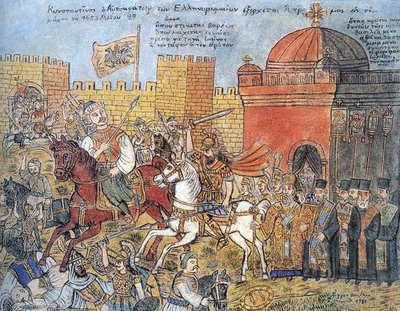The Medieval Church Conundrum: How the Gospel was Preserved and Spread from the Frontiers
What is often superficially regarded is the complex relationship between the Church and the civil authorities. Constantine’s conversion and his eventual interest in the internal affairs of the Church created tension between the civil authority and the church. Strong Christian leaders like John of Antioch, better known as John Chrysostom (the Golden Mouth), challenged and criticized the authorities in no uncertain terms. He and others like him were exiled. In exile, however, their voices of protest and criticism could not be hushed. This was the prevailing state of affairs. The result was that the Patriarch of Constantinople made sure that the evangelists of the Gospel be sent out away from the reach of the civil authorities. Men and women took the Gospel to the Slavic lands and further north and east into the Caucasus mountains into Armenia, Georgia, Persia and elsewhere. Some of these on-fire evangelists came out of Alexandria in Egypt. Gregory Thaumaturgus came out of Alexandria. History credits him with the conversion of the Armenians.

The Fall of Constantinople in 1453.
Image: Wikimedia Common
In the West, the problem became one of the church being stronger than the civil authority as it was increasingly weakened trying to withstand the invading Goths, Alans, Lombards, and Vandals. The authorities did not try to exile the Christian leaders and Ambrose was able to chastise Theodosius for an unwarranted war and get away with it. Ambrose was also the man who baptized a young convert named Augustine who quickly became an ardent believer in Jesus and a more than able apologist for the faith.
While Caesaropapism dogged the church in the East, Triumphalism (Church over State) became the problem in the Western Mediterranean. It was both a blessing and a curse for the Church in the West.
One of the boons came in the person of Pope Leo the Great, who in AD 452, traveled to Mantua to meet the Hunnic leader Attila and dissuade him from attacking Rome. He succeeded. A few years later, Leo met Gaiseric the Vandal leader at the gate of Rome. While the city was spared, Gaeseric made waste of the countryside. The bane of the church in the west was triumphalism—the church over the State. Charlemagne was crowned by the Pope.
Another problem was the idea of a primacy of an overall “bishop” over the church in these troubled times. This was debated within the western Mediterranean Christian world and certainly questioned within the Eastern Mediterranean Churches, and especially by the Greek patriarch, John IV in Constantinople, in AD 588. The main figure in the West was Gregory the Great. When John IV, better known as John the Faster (Jejunator) attached the term “ecumenical” to the title “patriarch,” Gregory (in AD 593) criticized John for assuming to be the head of the whole Christian community. John, in return, criticized Gregory for taking the title “papa” or “pope” as though he alone was the head of the whole Christian body. This was the beginning of the split which did not fully come until 1053. There were overtures to ward off such divisiveness before then as there had to be co-operation between the western church and the west, given the Barbarian invasions and then the invasions of the Arabs under the banner of Islam between AD 632 and 1050.
Category: Church History, Winter 2016


